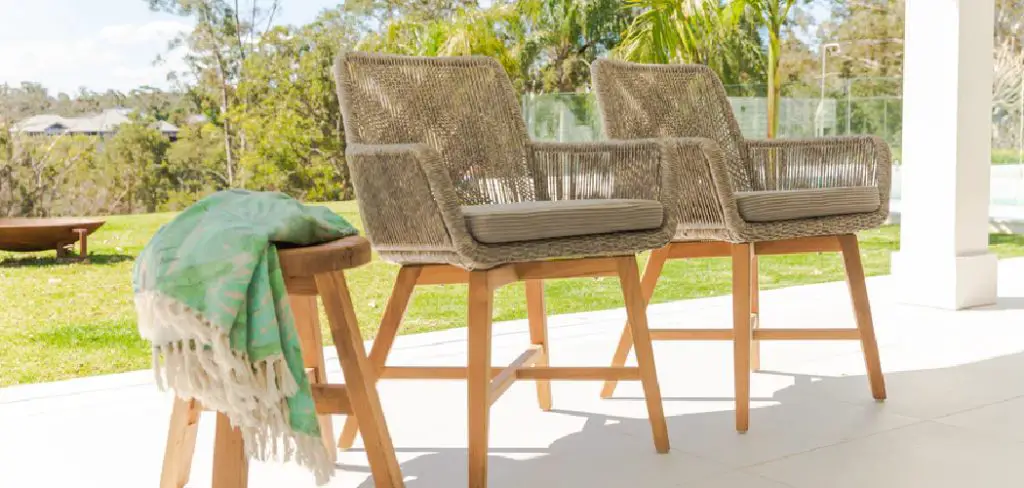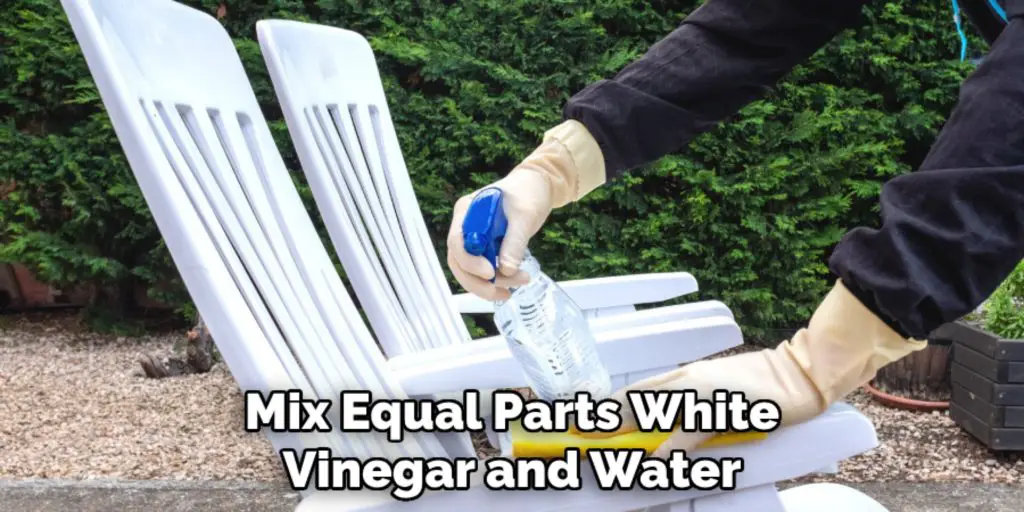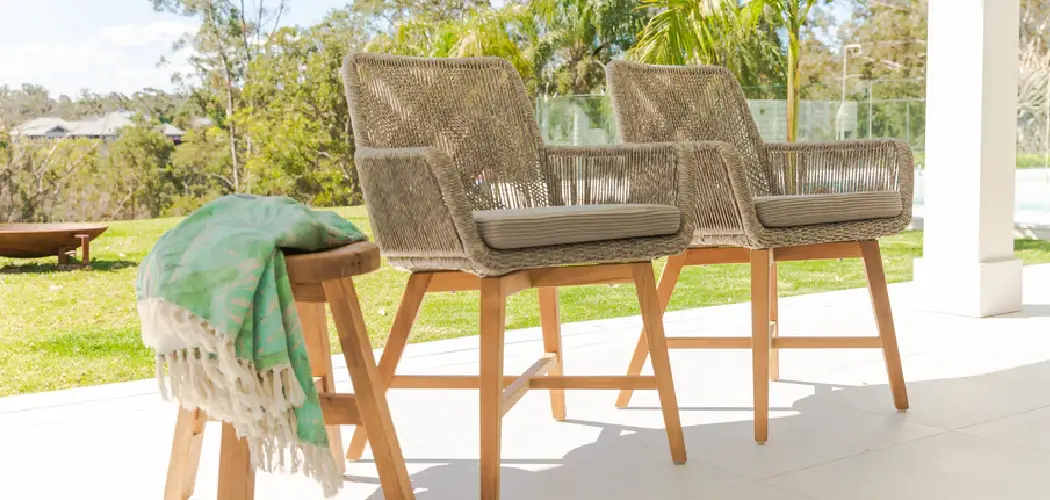Adirondack chairs are a classic and timeless choice for outdoor furniture, known for their distinctive design, comfort, and durability. Whether placed on a porch, in a garden, or by a lakeside, these chairs add charm to any outdoor space, making them a favorite among homeowners.

However, regular cleaning and proper maintenance are essential to keep Adirondack chairs looking their best and ensure they last for years. Exposure to the elements, such as sun, rain, and dirt, can lead to discoloration, stains, and even structural damage over time.
This article provides a comprehensive guide on how to clean Adirondack chairs, with detailed instructions for handling various materials, effective methods for removing tough stains, and valuable maintenance tips. By following these steps, you can prolong the life of your Adirondack chairs and preserve their beauty, allowing you to enjoy them for countless seasons to come.
Identifying the Material of Adirondack Chairs
Before cleaning your Adirondack chairs, it’s crucial to identify the material they’re made from, as this will determine the most appropriate cleaning methods and products to use. Adirondack chairs are commonly constructed from wood, plastic/polywood, or, less frequently, metal. Each material has unique properties requiring specific care to maintain longevity and appearance.
Common Materials
- Wood (e.g., cedar, teak, pine): Wooden Adirondack chairs are popular for their natural beauty and charm. They may have a smooth or slightly grainy texture, vary in weight depending on the type of wood, and often feature visible wood grain patterns. However, wood requires gentle cleaning to avoid scratching, fading, or warping, especially for softer woods like pine.
- Plastic/Polywood: Known for their durability and weather resistance, plastic or polywood chairs are lightweight and smooth with a uniform finish. While resistant to rot, they can attract surface dirt and grime over time, necessitating frequent wiping or washing.
- Metal: Though less common, metal Adirondack chairs are sleek and sturdy but prone to rust or corrosion if improperly cared for. They’re typically heavier and have a cool, solid surface texture.

Why Material Matters
The material of your Adirondack chair is vital to ensuring its longevity because cleaning techniques that suit one type may cause damage to another.
For example, harsh detergents or excessive moisture can harm wood, while improper metal cleaning may lead to rust. Identify the material by examining the texture, weight, and finish of the chair to select the safest cleaning and maintenance methods. A tailored approach will keep your Adirondack chairs looking their best for years to come.
Essential Cleaning Supplies and Tools
Basic Supplies
To keep your Adirondack chairs in great condition, you’ll need a few essential items. Start with mild soap, water, a soft brush, and microfiber cloths for everyday cleaning. For more persistent stains, consider using specialized cleaners, such as wood cleaner or plastic cleaner, tailored to the material of your chair.
Optional Tools
Some tools can make cleaning more efficient. A pressure washer can be a convenient option for plastic or metal chairs, but ensure you use a low-pressure setting to avoid damage. For tough stains or marks, sandpaper or a durable sponge can help gently buff away imperfections.
Safety Gear
It’s always advisable to wear protective gear, such as gloves and safety glasses when cleaning Adirondack chairs. Chemical cleaners can be harmful if they come into contact with the skin or eyes, and sanding may produce fine dust particles that could irritate your lungs or cause eye irritation.
How to Clean Adirondack Chairs: Step-by-Step Cleaning Process
Preparation
Begin by removing any loose debris from the surface of your wooden Adirondack chair. Use a vacuum or soft brush to clear away dirt, leaves, or dust that may have accumulated.
Carefully inspect the chair for signs of mildew, cracks, or splinters, as these may require additional care before or during cleaning. Taking the time to prepare the chair properly ensures the cleaning process is effective and safe for the wood.

Cleaning Process
Create a cleaning solution by mixing mild soap with water in a bucket. Avoid using harsh chemicals, as these can strip the natural properties of the wood or damage its finish. Dip a soft brush into the solution and gently scrub the chair’s surface, following the direction of the wood grain to prevent scratches or streaks.
Pay extra attention to areas with stubborn stains, ensuring to clean all crevices thoroughly. Once the cleaning is complete, rinse the chair with a garden hose to remove soap and residue. Finally, use a microfiber cloth to dry the chair, helping to prevent watermarks or potential swelling of the wood.
Special Care for Treated vs. Untreated Wood
Wooden Adirondack chairs vary in treatment, so it’s important to apply care specific to their finish.
- Treated wood: Avoid using abrasive tools or brushes that could scratch or disrupt the protective coating. This coating is crucial in shielding the wood from moisture and sun damage.
- Untreated wood: After cleaning, enhance durability and protect the wood against weathering by applying a wood oil or sealant. This step helps to prevent cracking, fading, or water damage, ensuring the chair remains in excellent condition.
By following these steps, you can maintain the natural beauty and longevity of your wooden Adirondack chairs with ease.
Special Cleaning Tips for Metal Adirondack Chairs
Proper care for metal Adirondack chairs ensures their longevity and keeps them looking their best. Follow these steps for effective cleaning and maintenance:
Preparation
Begin by dusting off any dirt or debris from the surface of the chairs. While inspecting, check for signs of rust or peeling paint, as these will need extra attention during cleaning.
Cleaning Process
Prepare a mild soap and water solution and use a soft sponge to gently clean the chair’s surface. Focus on removing any dirt buildup or stains. For rust spots, use a wire brush or sandpaper to scrub gently until the rust is removed. Be careful not to damage the surrounding areas.
Once cleaned, rinse thoroughly with clean water to remove any soap residue. Immediately dry the chair using a microfiber cloth to avoid watermarks or the risk of further rust forming.

Preventing Future Damage
To protect your metal Adirondack chairs, apply a coat of rust-resistant paint or sealant after cleaning. This will create a barrier against moisture and prevent rust from developing.
Additionally, store the chairs indoors during rainy or snowy weather or use durable covers for extra protection. Regular care will keep your chairs in excellent condition for years to come.
General Maintenance and Protection Tips
Proper maintenance ensures your metal Adirondack chairs stay functional and visually appealing for years. Below are some essential tips for upkeep:
Seasonal Cleaning Routine
Clean your chairs at least once every season to remove dirt, grime, and other buildups that could lead to long-term damage. Use a mild soap and water solution for routine cleaning, and address any stubborn stains or rust spots promptly.
Weatherproofing Tips
Invest in durable outdoor furniture covers to shield your chairs from rain, snow, and harmful UV rays, which can cause fading or weathering. Additionally, applying a high-quality sealant or protective coating based on the material of your chairs will enhance their resistance to moisture and oxidation.
Storage Advice
During winter, it is best to store your chairs in a dry, sheltered area, such as a shed or garage. Proper storage prevents prolonged exposure to harsh weather, extending the lifespan of your furniture.
Regular Inspections
Inspect your chairs often to check for any loose screws, cracks, or signs of rust. Address these issues immediately to ensure the chairs remain stable and maintain their original aesthetic. Regular upkeep will ensure your Adirondack chairs remain in top condition year-round.
Eco-Friendly Cleaning Alternatives
DIY Natural Cleaners
Mix equal parts white vinegar and water to tackle dirt without harsh chemicals for a safe and effective cleaning solution. Baking soda serves as an excellent gentle abrasive for stubborn stains, ensuring your Adirondack chairs stay clean without damaging the environment.

Reusing Materials
Old toothbrushes are perfect for scrubbing crevices and hard-to-reach spots on your furniture. Additionally, repurpose soft cloths or sponges for wiping surfaces, reducing the need for disposable cleaning supplies.
Sustainable Practices
Avoid using chemical-based cleaners that can harm both your furniture and the environment. Instead, opt for natural solutions and ensure that any cleaning wastewater is disposed of responsibly, preventing contamination of soil or water sources.
By incorporating these eco-friendly alternatives, you contribute to a healthier planet while maintaining your Adirondack chairs in pristine condition.
Conclusion
Regular cleaning and maintenance are essential to preserving the beauty and functionality of Adirondack chairs. By understanding how to clean Adirondack chairs and using appropriate techniques and eco-friendly supplies, you ensure that their material remains undamaged and durable.
Establishing a routine cleaning schedule and taking preventative measures, such as shielding chairs from severe weather, can significantly extend their lifespan. Caring for your Adirondack chairs enhances their appearance and supports sustainability and lasting comfort. With proper care, your Adirondack chairs can remain a stylish and comfortable part of your outdoor space for years to come!

